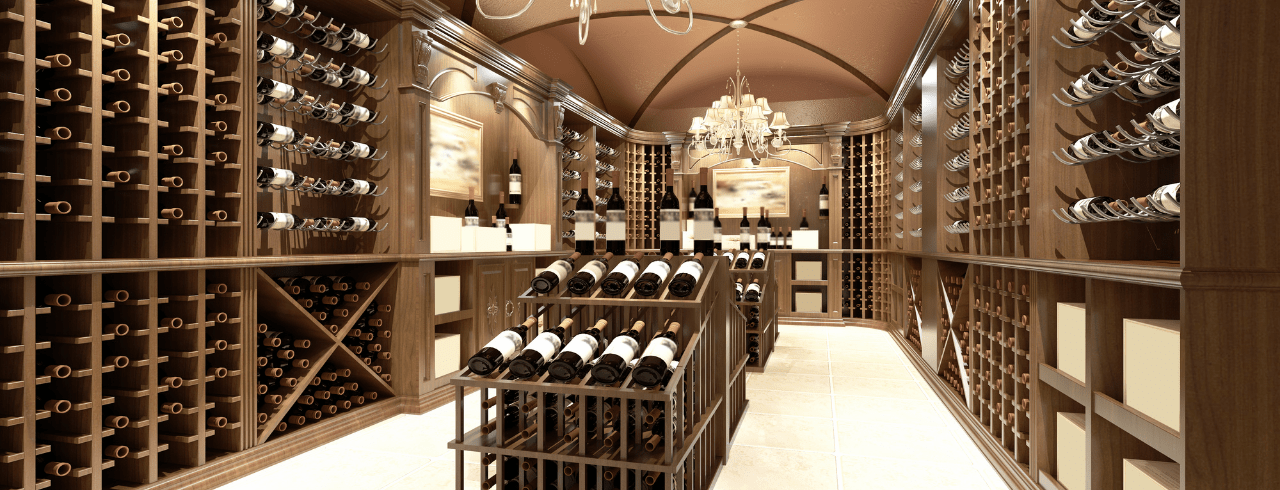
Wine Bottle Sizes Guide
In the world of vino, wine bottles represent an often misunderstood or underappreciated necessity.
It’s obvious why we need wine bottles, but what contributes to their distinct design? What do differences in a bottle’s shape or size tell us about serving the wine it contains? Is it worth exploring beyond the “standard” bottle?
For these answers and more, read on for our introductory Guide to Wine Bottle Sizes.
History of the Modern Wine Bottle
Before we break down the most popular sizes, let’s briefly analyze the development of the wine bottle as we know it today.
The first widespread use of glass containers for vino stretches back to the 16th century when the popular design was that of a squat bottle with a sturdy, sizable base, distinctly short neck, notable lack of cork, and no capacity for upright storage.
The next significant evolution of the wine bottle, which remains the most popular today, wouldn’t make its debut until the 1820s -- an influential period for the packaging and delivery of alcohol.
In this decade, winemakers realized they needed a more efficient way to preserve their creations through the production and shipping process.
Hoping to find a more suitable, reliable way to contain its product, the industry took a collective step toward cylindrical bottles with small openings, oxygen-limiting corks, substantially longer necks, gentle “shoulders,” and a tapered body.
In addition to giving packaged wine a more sleek and unique appearance, these bottles had a far longer shelf life, comfortably resting on their side during the aging and shipping process without losing quality.
While many variations on this fundamental design developed in the centuries since, both in size and shape, these features are still standard among most glass wine bottles you’ll find on the market today.
Wine Insiders Tip: For more information on wine packaging and storage, check out our Insider Blog and read our posts on The Basics of Wine Serving Sizes, Boxed Wine, and Wine Preservation.
Popular Wine Bottle Sizes
Now that you understand the origins of the modern bottle let's dive into five of the most popular sizes you’ll find on the market.
As we discuss each bottle type, keep in mind the “standard” wine glass holds 5 oz of wine and that all the following bottles are typically made of dark green or amber glass to limit light exposure.
Standard
When you close your eyes and imagine a bottle of wine, it’s likely that the standard bottle is the first that comes to your mind.
This bottle is ubiquitous in countless cultures worldwide and is inescapable in both historical and contemporary depictions of life, leisure and alcohol.
With a volume of 750 ml (~25 oz), or five standard glasses of wine, the standard size bottle has a long and fascinating history.
Created by French winemakers in the 19th century, the 750 ml bottle worked to satisfy British wine drinkers, the primary customers of French wine, who wanted a size that better translated to their “Imperial gallon” system.
In the centuries since, this standard wine bottle grew dramatically in popularity, becoming the dominant option in Old and New World wine countries.
While there’s no scientific explanation for why the standard bottle is “better,” the numbers speak for themselves: standard bottles account for 50% of global wine sales with no signs of slowing down.
Half
As the name suggests, the half bottle (a.k.a. the “Demi”) contains 50% of the wine found in its standard relative.
At 375 ml (~12.5 oz), this smaller option contains 2.5 standard glasses of wine, making it an excellent option for smaller gatherings of 1-3 people.
Though it seems rather useful, the half-size bottle can be challenging to find regularly.
This is likely because wine stored in smaller vessels ages more quickly, making it more difficult for winemakers to ensure the longevity of the vino their customers purchase.
Split
The split bottle is a tiny, adorable creation that can make for a fun and quirky addition to a lively gathering.
Typically utilized for sparkling wines and Champagne, this miniature option contains 187.5 ml (~6 oz) of wine and usually fills one standard glass.
As drinkers rarely try to store a split bottle for extended periods, it’s rare to experience a dip in quality related to its highly diminutive bottle.
Magnum
Moving away from smaller options, we head toward the magnum -- arguably the most famous of the “mega” wine bottles.
At 1.5 L (~50 oz) in volume, this bottle holds ten standard glasses of wine (double a standard bottle) and represents many drinkers' introduction to super-sized vino.
While it’s easy to associate an increase in quantity with a decrease in quality, magnums prove this cliche is far from a rule.
Whether you’re looking to provide wine for a bigger group (5-7 people) or take advantage of this larger bottle’s enhanced aging capability and smooth taste, the right magnum can make the perfect addition to your collection -- provided you have space.
Double Magnum
As you’ve likely guessed, the double magnum (a.k.a. “Jeroboam”) is twice the size of the standard magnum and four times larger than your average wine bottle.
At 3 L (~100 oz), this enormous option contains as many as 20 standard glasses of wine, making it an impressive vinicultural force.
While, incredibly, there are multiple bigger wine bottles, the double magnum is the most popular size in its vicinity. It can be a smash hit at larger gatherings or parties totaling around 8-10 people.
Like its smaller relative, the double magnum also offers the many benefits of a larger bottle, making it an ideal candidate for long-term storage.





